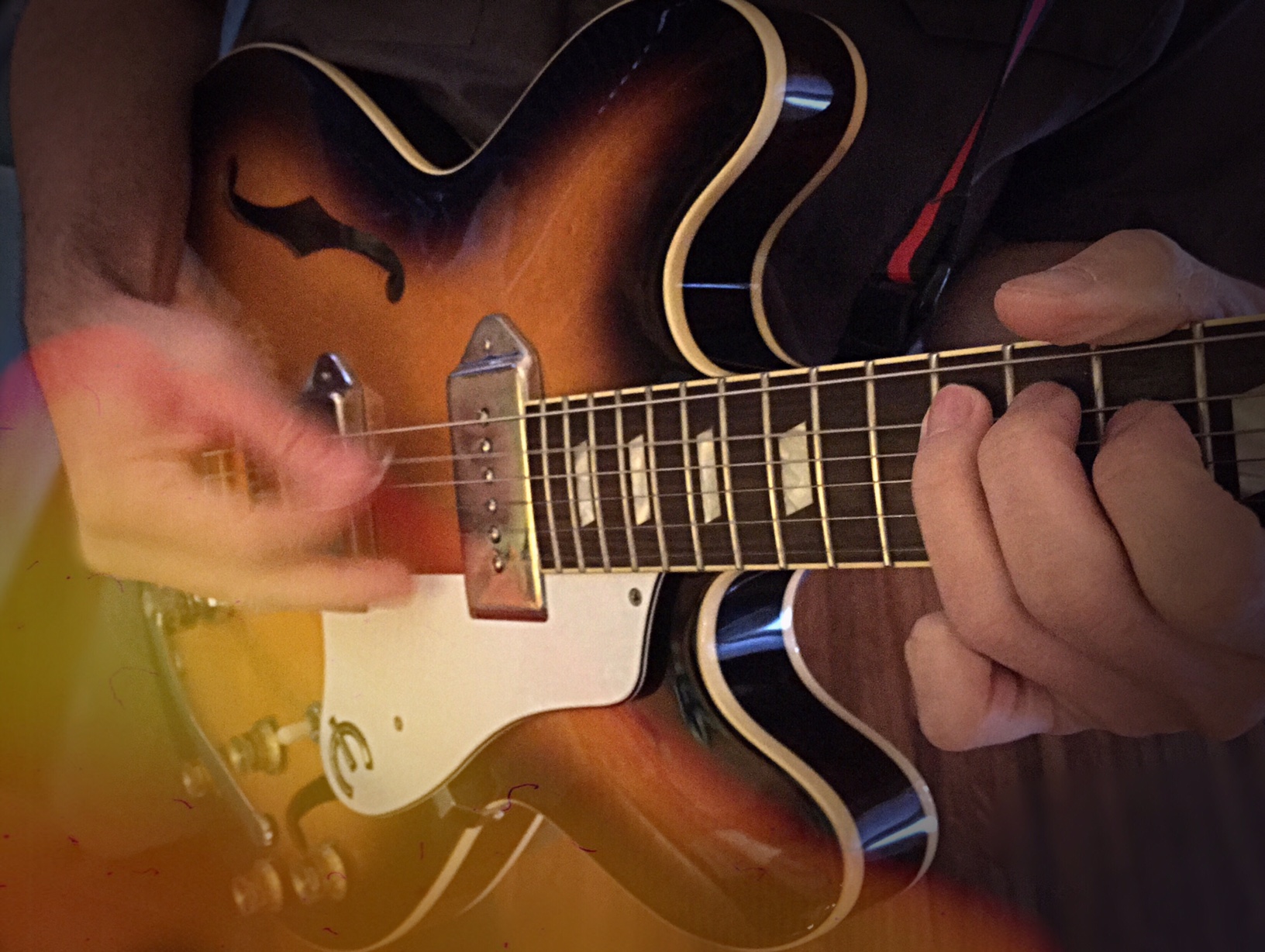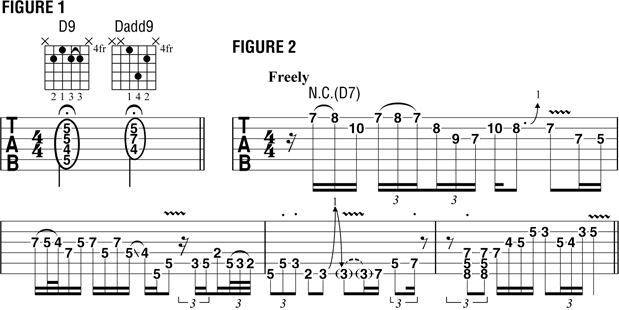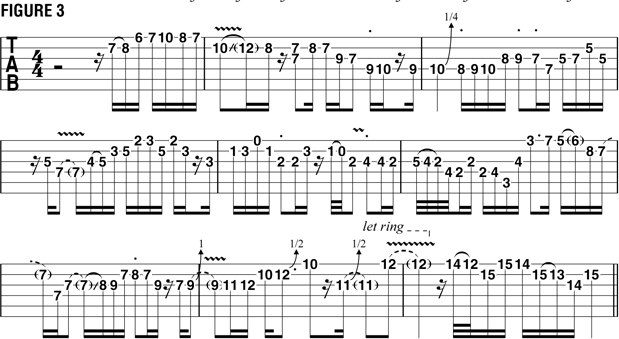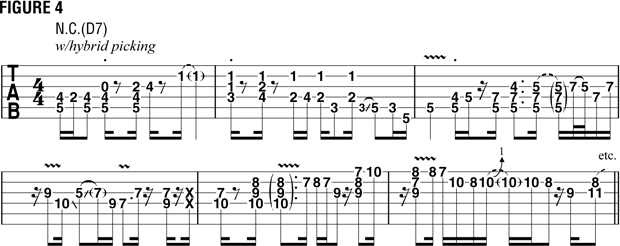Investigating Ways to Use Chord-Based Ideas in Solo Improvisations

This month I’d like to discuss my approach to chord playing—how I look at the structure of chords and create solo lines and licks that incorporate small chord fragments as well as fully voiced chords.
My approach to chords is a little unique. Many players choose to play either single-note lines or chords, with some distinction made between the two types of playing. One day, I made the connection between what I might play as a single-note melody and what I might then play utilizing groups of notes simultaneously—in other words, as chords. I made the decision that “melody” would be one note at a time and “chords” would be any combination of two or more notes at a time. Other than that, my approach to improvising is exactly the same. I discovered that this type of thinking freed me up tremendously, as I could move from single-note ideas to harmonized ideas whenever and wherever I pleased.

For our purpose here, let’s use the D Mixolydian mode (D E Fs G A B C) as the harmonic setting. A chord that “lives within,” or clearly “describes,” D Mixolydian is D9, and many of you will be well familiar with the D9 voicings shown in FIGURE 1. D9 is built from the root, third, fifth, seventh and ninth of D Mixolydian (D Fs A C E), so this scale is natural to use when soloing over a D9 chord.

FIGURES 2 and 3 illustrate improvised solo ideas that remain diatonic to (within the scale structure of) D Mixolydian. Other than the very occasional passing tone (a note that falls outside of the structure of the scale/mode that is used to “connect” scale tones), everything sits within D Mixolydian.
If I then utilize the same approach but allow myself to play more than one note at a time, I end up with a chordal improvisation that comes from the same awareness that I have when playing single-note figures, which is simply a recognition of where the notes of D Mixolydian are found on the fretboard.

Using that approach, I might play something along the lines of FIGURE 4. In bar 1, I begin with two-note sounds, but immediately expand to different three-note combinations, played along with single notes and double-stops (two-note figures) as I continue my improvisation. Notice that I use hybrid picking (pick and fingers) as I move from one idea and one area of the fretboard to another. Hybrid picking allows me the freedom to sound the many different tones in each chord shape simultaneously, as a keyboard player would.
By using more than one note at a time, I am now improvising harmonically, which opens up a tremendous range, in terms of the chordal qualities that are available to me. This is very different from thinking about the number of ways I might know how to play D7. With this approach, I can put my fingers down in different combinations and surprise myself by the new sounds that can be discovered with such an “open” approach to chordal playing.
Get The Pick Newsletter
All the latest guitar news, interviews, lessons, reviews, deals and more, direct to your inbox!







![[from left] George Harrison with his Gretsch Country Gentleman, Norman Harris of Norman's Rare Guitars holds a gold-top Les Paul, John Fogerty with his legendary 1969 Rickenbacker](https://cdn.mos.cms.futurecdn.net/TuH3nuhn9etqjdn5sy4ntW.jpg)


